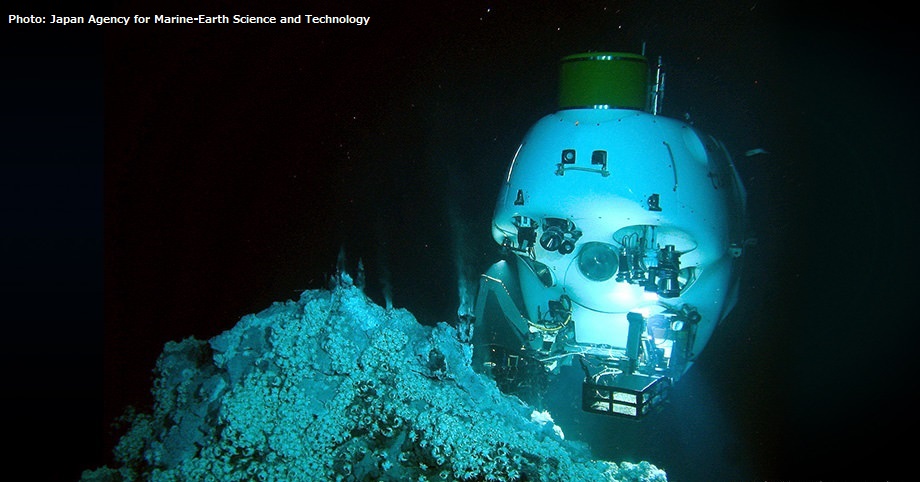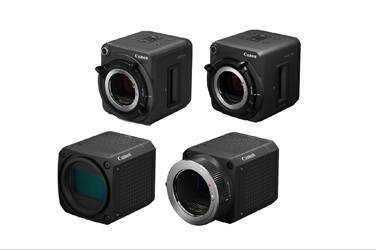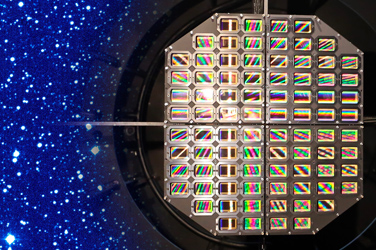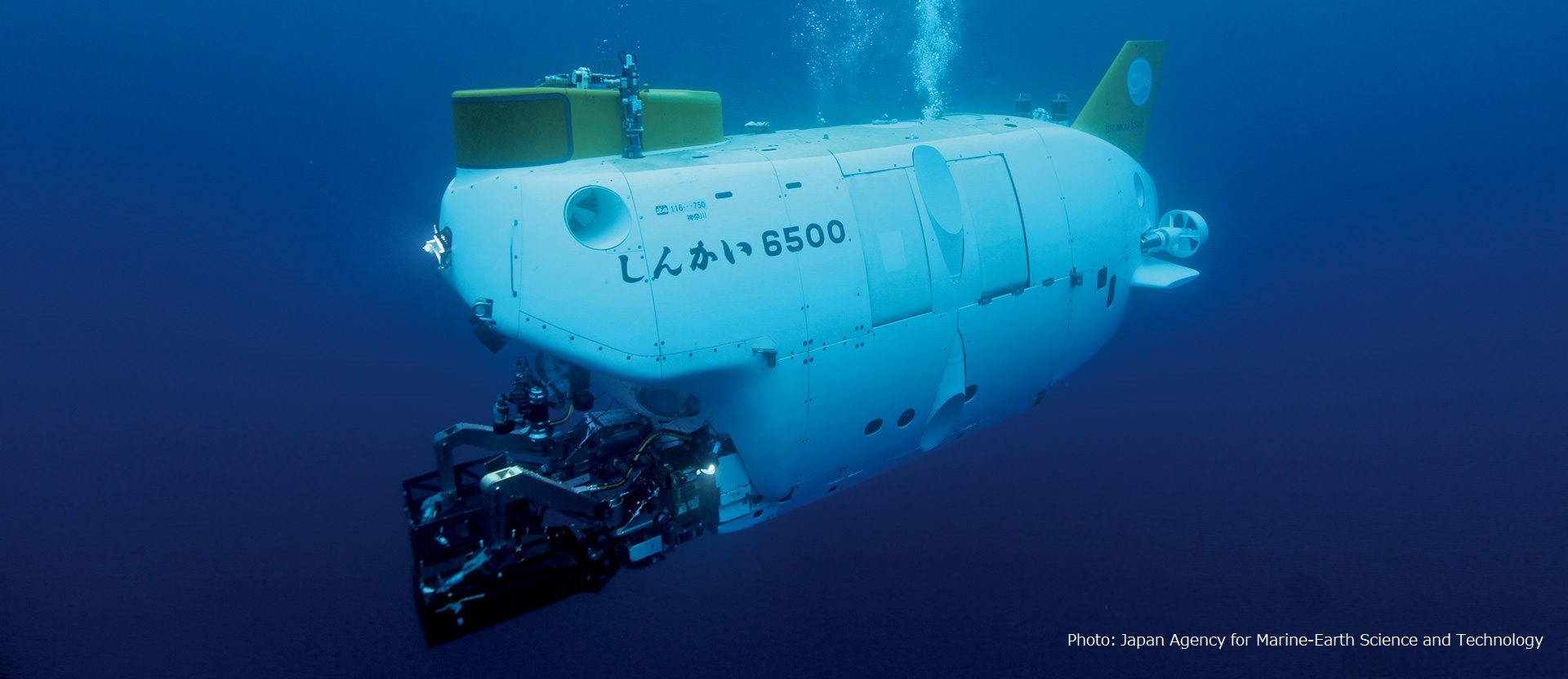

The Challenge of Deep Sea Exploration with the Shinkai 6500
Ultra-High-Sensitivity Multi-Purpose Cameras
As a manned research submersible, the Shinkai 6500 boasts world-leading deep submergence capabilities. Evolving with constant upgrades, it is positioned at the core of the global deep-sea research efforts. Since 2018, Canon’s ultra-high-sensitivity multi-purpose camera, ME20F-SH has been equipped to the "Shinkai 6500" as its primary camera, used in many researches.
March 7, 2022
The Shinkai 6500: Playing a crucial role in Japanese and global deep sea research
It would be no exaggeration to say that the deep sea is like another universe. “Deep sea” generally refers to the part of the ocean below the depth of 200 meters, which constitutes 98% of all the ocean in the world. It is also a treasure trove of crucial information for unravelling geoscientific mysteries such as how Earth was formed, evolution of life and environmental change.
However, extremely harsh conditions such as high water pressure, low temperatures and the presence of hydrothermal vents that spew out burning hot sea water make deep sea research a challenging endeavor. To date, humans have only been able to explore very little of the deep sea.
One vehicle that is playing a core role to deep sea research efforts, not just in Japan but throughout the world, is the Shinkai 6500, which is owned by the Japan Agency for Marine-Earth Science and Technology (JAMSTEC). Capable of diving as deep as 6,500 meters, also known as the hadal zone, it is one of the world’s foremost manned research submersibles.
Completed in 1990, the Shinkai 6500 has since evolved through multiple improvements. Besides the function as a submersible, the performance of the video system that monitors and records the state of the deep sea have also been improved. In 2018, Canon’s ultra-high-sensitivity multi-purpose camera ME20F–SH was installed as the primary camera of the Shinkai 6500. Noriyasu Yamauchi of Nippon Marine Enterprises, Ltd, worked together with JAMSTEC to decide on a new camera.
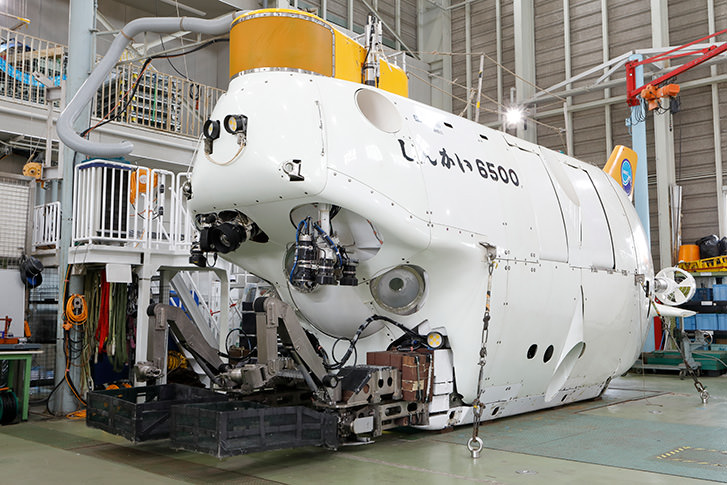
The Shinkai 6500 manned research submersible, playing a core role to global deep sea research efforts.
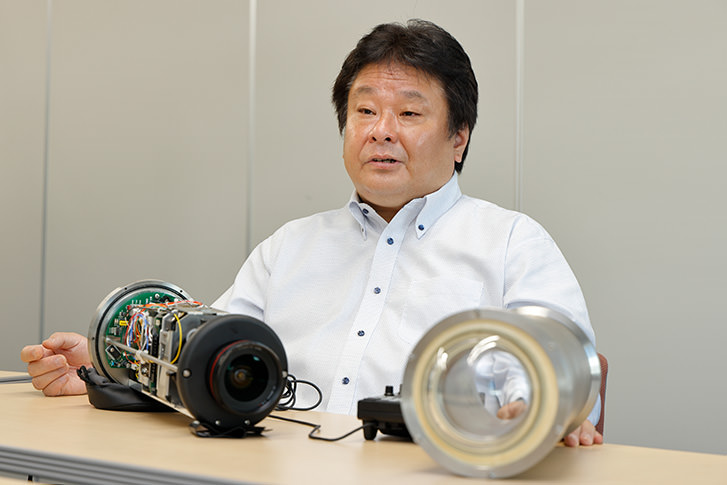
Director Noriyasu Yamauchi
Head of Underwater Business Unit
Unit Executive, Underwater Business Unit
General Manager, Deep Sea Operation and Engineering Department
Technical Service and Promotion Office
Nippon Marine Enterprises, Ltd.
A camera handpicked by deep sea survey specialists
Nippon Marine Enterprises, Ltd. supports JAMSTEC in the management and operation of their vessels as well as in their research and survey activities. Through this partnership, Yamauchi has participated in many deep sea research projects to date.
“The deep sea is pitch black. With the naked eye, visibility is no more than 5 to 10 meters; the radius illuminated by light. You can only observe one specific area at a time.”
In the deep sea, subjects must be illuminated in order to be photographed. However, capturing bright and clear images is not as simple as shining strong light through the darkness: the stronger the light, the more it will be reflected by particles floating in the water (such as marine snow), which frequently leads to image whiteout. The reflected light also prevents the colors and forms of deep sea organisms from being captured accurately. On top of that, the electricity consumed by the lights affects the possible length of deep sea operation for battery-powered deep sea submersibles.
“Being able to see further and clearer is crucial for deep sea research, so we needed a high-sensitivity camera that can provide clear images even with little illumination. In 2017, the high vision cameras installed in our underwater equipment required a minimum subject illuminance of about 1 to 0.1 lux, which was limiting in terms of capturing deep-sea footage. That was when we came across the Canon ME20F-SH ultra-high-sensitivity multi-purpose camera. Compared with the 0.1 lux at best capabilities of our system back then, the multi-purpose camera’s 0.0005 lux minimum subject illuminance was extremely attractive, and we decided to give it a try.”
“Lux” is a unit used to describe the amount of brightness received by a surface lit by a light source. Canon’s ME20F-SH is able to shoot with no additional artificial lighting even in conditions so dark that it is hard to identify subjects.
- *Minimum subject illumination of 0.0005 lux is equivalent to ISO 4,000,000.
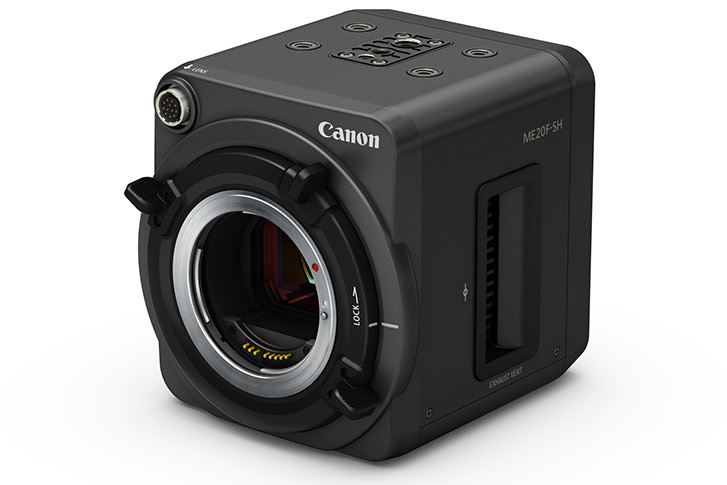
Canon ME20F-SH ultra-high-sensitivity multi-purpose camera
The camera’s 35mm full-frame sensor consists of large pixels measuring 19 micrometers per side and unique technologies in the pixels and readout circuitry. These achieve a minimum subject illumination of no more than 0.0005 lux (at maximum gain 75dB, ISO 4,000,000 equivalent).
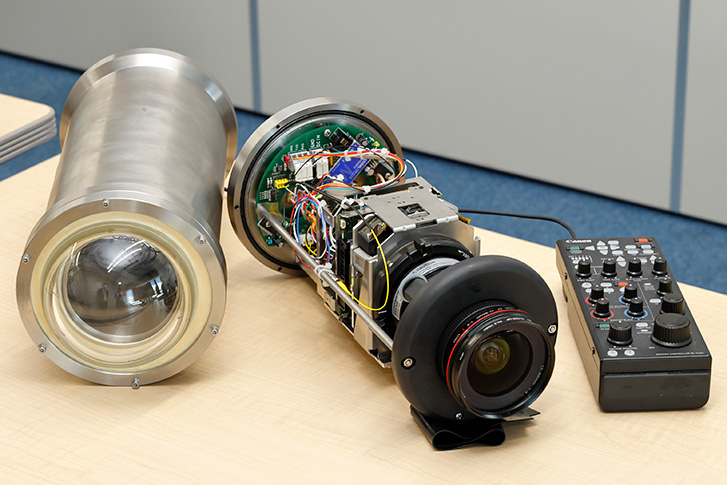
The Canon ME20F-SH ultra-high-sensitivity multi-purpose camera (center) and the Remote Controller RC-V100 (right) that are installed on the Shinkai 6500. Because the camera is kept in a housing (left) that can withstand the water pressure at 6500 meters deep, it is installed without its exterior casing.
Capturing the deep sea world with minimum light from the cockpit
The ME20F-SH was first installed on an unmanned prototype survey vehicle to survey the Mariana Trenches at a depth of 10,911 meters. Yamauchi remembers seeing the actual footage from the ME20F-SH.
“At a glance, the deep sea seemed like a pitch-black world that had nothing other than mud with no signs of life, so I was extremely surprised to see small sea cucumbers and other living things so clearly.”
After that, the ME20F-SH was installed onto the Shinkai 6500. Yamauchi remembers the exclamations of surprise from the researchers on board. To reduce battery consumption, the underwater lights of the Shinkai 6500 were usually all turned off during submersion until the vessel reached its target depth. During this time, nothing would be visible from the three small viewports in the cockpit. However, the camera’s monitor showed images of the scenery outside, captured by the ME20F-SH in the faint light from the cockpit that shone from the viewports. Apparently, the camera even clearly captured areas that were previously not visible due to lack of illumination.
“I was extremely surprised to learn how incorporating the ME20F-SH made it possible to see a previously invisible world. The ultra-high sensitivity of this camera offers huge advantages in the pitch-black deep sea.”
Apart from deep sea research, Yamauchi explained, the ME20F-SH is also useful for other purposes, including configuring systems used to inspect underwater structures such as bridge piers for damage, and he hopes there will be even more uses for the camera in the future.
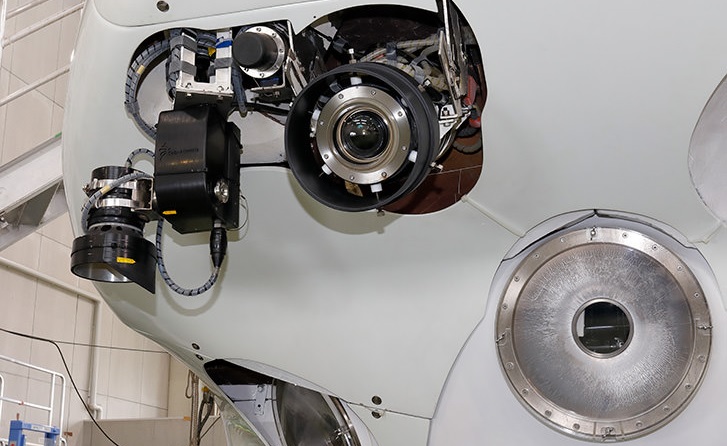
The Canon ME20F-SH ultra-high-sensitivity multipurpose camera installed on the Shinkai 6500. The camera is able to capture images of the deep sea using only the faint light emitting from the nearby viewports.
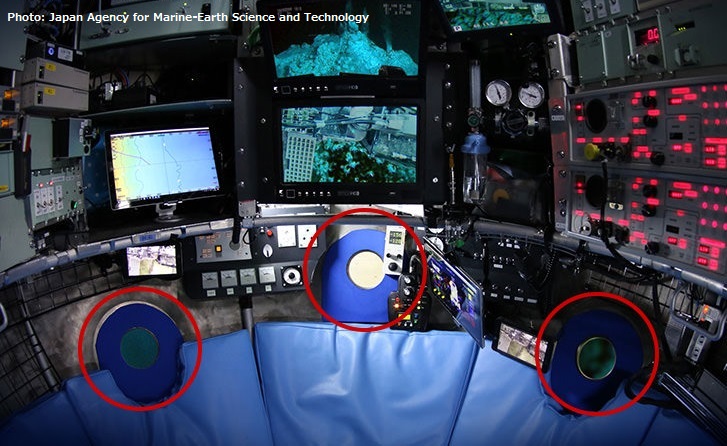
The titanium alloy pressure hull is a sphere with an internal diameter of 2 meters. This is where the cockpit of the Shinkai 6500, which sits three people, is located. The viewports are circled in red.
Contributing to deep sea survey and research while responding to real-world needs
The ME20F-SH is currently used in various deep sea surveys and research together with the Shinkai 6500. However, according to Yamauchi, cameras used in an extreme environment like the deep sea face more challenges than just illumination. One such challenge is that presented by the special casing (housing) that protects the camera from the sea water and strong water pressure.
Existing camera housings use a thick, dome-shaped glass, and the camera has to capture images through this glass. Even if the center of the image was captured sharply, the image would become more blurred towards the corners due to field curvature. Thus, Canon decided to develop a dedicated converter lens, which successfully corrected the refraction caused by the glass, enabling corner-to-corner image sharpness.
Yamauchi has much to look forward to regarding the converter lens. “Although it’s still in the trial stage, attaching the converter lens results in clarity all the way to the edges of the image, producing footage completely different from before. I believe this will have a positive effect on deep sea research outcomes.”
Deep sea research is critical for discovering yet-unknown deep sea organisms and seabed resources as well as understanding earth environments and creating a more sustainable society. Canon contributes to the realization of these goals through its advanced technology.
